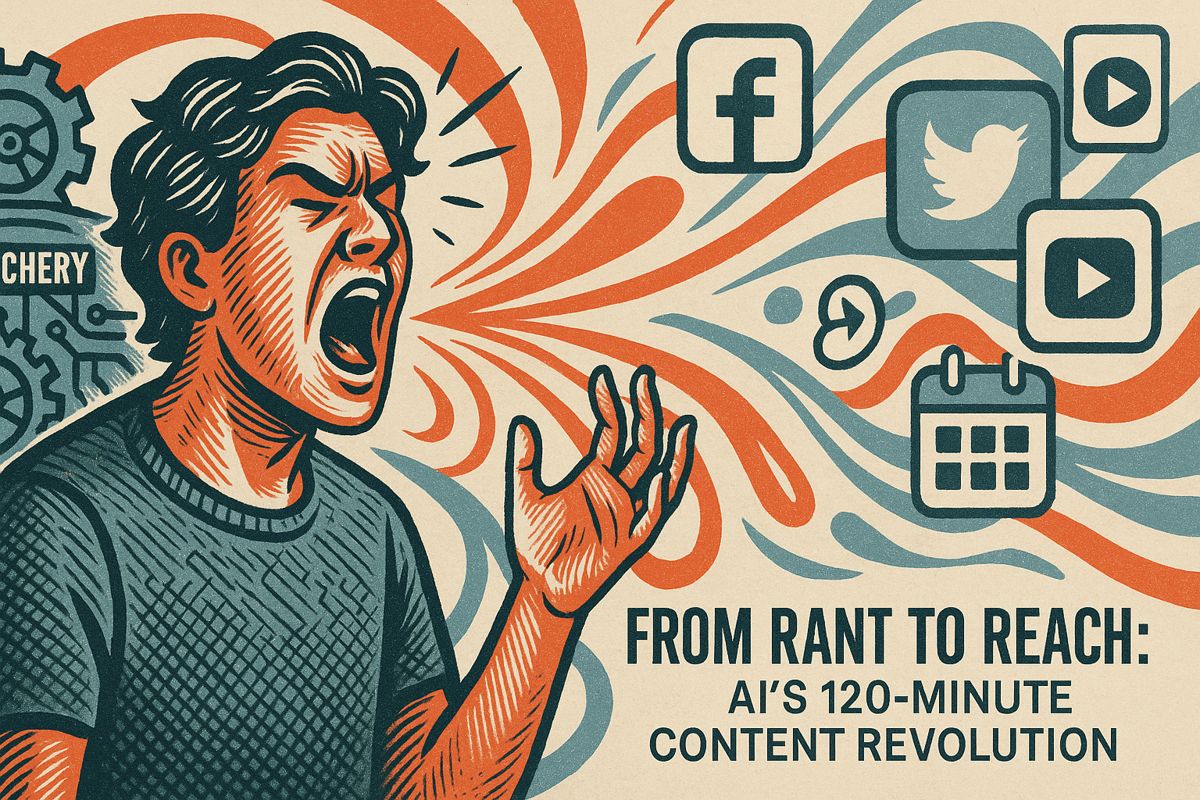In 2025, media companies are increasingly using AI tools to manage reputation and combat disinformation like deepfakes. As search engines feature AI-generated summaries prominently, a single sentence in a snippet can make or break brand credibility overnight. This guide outlines how algorithmically generated perceptions are formed and details strategies for communication teams to monitor, manage, and defend their brand’s sentiment in this new AI-driven landscape.
Why Off-Site Signals Now Shape First Impressions
AI-powered search results compile answers from a wide array of off-site signals, including reviews, ratings, and location data. Research confirms “AI overviews” use Google Maps pins, app store ratings, and old articles to determine brand prominence (Rosemont Media). This means communications teams must monitor their brand’s entire digital presence, not just owned media. With the market for AI reputation management projected to grow from $214 billion in 2024 to $1.3 trillion by 2030, and 73% of businesses planning to adopt these tools by 2025 (Emitrr), the stakes are high. A single negative rating resurfacing in an AI summary can instantly damage audience perception.
Media companies leverage AI to proactively monitor online sentiment, track brand mentions in real-time across countless platforms, and identify emerging threats like deepfakes. These tools enable rapid response to negative narratives and help ensure that AI-generated search summaries reflect a brand’s true and current standing.
Building an AI-First Monitoring Playbook
An effective AI-first strategy starts with continuous monitoring. Leading media teams use automated platforms to crawl social media, news outlets, and review sites hourly, supplementing with manual checks. While stable brands can use a weekly review cadence, crisis-prone organizations need daily dashboards that alert them to sentiment shifts greater than 10%.
Key tool categories for 2025 include:
- AI overview trackers such as Trakkr.ai that record prompt level visibility
- Competitive SERP suites like Ahrefs and SEMrush with early AI modules
- Sentiment monitors (Buzzabout, Brand24) that grade tone across channels
- Deep search analyzers like Profound that trace which citations feed large language models
Beyond surveillance, structured data is critical. Implementing schema.org markup for Organization or Person on all content – from press releases to video descriptions – helps search engines accurately identify your brand and prevents incorrect attributions in AI summaries.
Crisis Response Principles in a Generative World
When a negative story propagates through AI summaries, response speed is more critical than scale. Case studies show that brands using AI sentiment tools cut average response times by 75 percent. PepsiCo’s 2024 social backlash illustrated this: real-time dashboards identified the problem, allowing communications to issue a timely apology and restore positive tone.
Effective playbooks follow three pillars:
- Early detection – set threshold alerts for volume and polarity changes.
- Authentic clarification – publish source links, data, or video proof that corrects erroneous AI claims.
- Multi-channel amplification – seed the corrected narrative through owned sites, partner outlets, and paid posts so models retrain on accurate content.
Beyond responding to text-based issues, teams must prepare for emerging threats like deepfake videos and synthetic audio quotes. Deploying image forensics and voice verification services is now essential. Many reputation management suites integrate deepfake detection, allowing for automated action once a forgery is confirmed (OptimizeUp).
By mastering these AI-driven tactics for monitoring and response, media companies can proactively shape their digital narrative, ensuring that the first impression a user receives from an AI summary is both accurate and authoritative.
How do AI overviews change the day-to-day work of reputation teams?
AI overviews have turned “wait-and-see” PR into 24/7 triage.
Modern search boxes now surface Google Maps ratings, podcast transcripts, 2021 Reddit threads – any off-site signal – before a prospect ever reaches your site.
– 80 % of searchers trust the AI snapshot at the top of the page at least 40 % of the time, according to Bain’s 2025 study.
– A single 3.5-star rating that resurfaces in an AI summary can drop brand consideration by 18 % within 48 h, PepsiCo’s 2024 crisis logs show.
Action for 2025: Run a weekly “AI-first audit” – open an incognito window, ask ChatGPT or Perplexity for your brand plus “reviews”, screenshot the answer, and route the findings to legal, product and customer-support Slack channels the same day.
Which tools reliably track off-site signals that feed AI summaries?
You need a two-layer stack:
1. AI visibility trackers
– Trakkr.ai – purpose-built to log when ChatGPT, Bing Copilot or Perplexity mention you.
– Profound – shows which sources the engines cite so you can prioritise earned-media pitches.
2. Sentiment & entity trackers
– Brand24 – real-time alerts when Reddit, TikTok or regional news mention your brand with negative sentiment ≥ 60 %.
– Buzzabout – clusters trending phrases (“fake news”, “app crashes”) before they hit mainstream media.
Tip: Export the trackers to a shared Looker Studio dashboard so marketing, PR and product see the same pulse – internal misalignment is the #1 reason crises escalate in 2025.
What exactly should we do when an old negative review pops into an AI overview?
Follow the “3-3-30” rule piloted by EU broadcasters in 2024:
– 3 minutes – Acknowledge publicly on the channel where the complaint lives (“We see the 2022 review about login bugs – here’s what we fixed”).
– 3 hours – Publish a technical or policy update page and mark it up with schema.org/Correction so AI engines prefer the fresh source.
– 30 days – Run a micro-PR campaign (podcast guesting, LinkedIn articles, conference quotes) to push five new positive, authoritative citations into the same AI training window; Profound data show mention velocity outweighs domain authority in generative rankings.
How can we prepare for deepfake or synthetic-media attacks?
Agentic AI now generates fake CEO videos in under 15 minutes for $15.
Preparation checklist:
1. Hash every official photo & video with Microsoft Video Authenticator; store hashes on a public blockchain so fact-checkers can verify.
2. Add an internal “90-second verification SOP” – no executive statement is posted until two staffers confirm the clip matches its hash.
3. Rehearse a “dark-site” crisis page that can go live in < 10 minutes with a filmed denial, media kit and pre-approved Google Ads copy; PepsiCo’s drill cut negative share of voice from 62 % to 14 % in four hours.
Who owns the budget – marketing, PR or product – for AI-reputation tooling?
In 2025 the safest answer is “a shared OKR under the COO”.
– Average spend is USD 0.08 per brand mention tracked; mid-size media firms allocate USD 45–60 k annually for a two-brand portfolio.
– Companies that silo the budget inside marketing see 30 % slower response times because product teams lack alerts to ship code fixes.
– Best practice: create a “Reputation Ops” squad with KPIs tied to (a) AI snapshot sentiment score and (b) reduction in support tickets labelled “confusion over reviews/ratings”; fund it from a 70/30 marketing/product split to keep both incentives aligned.



















